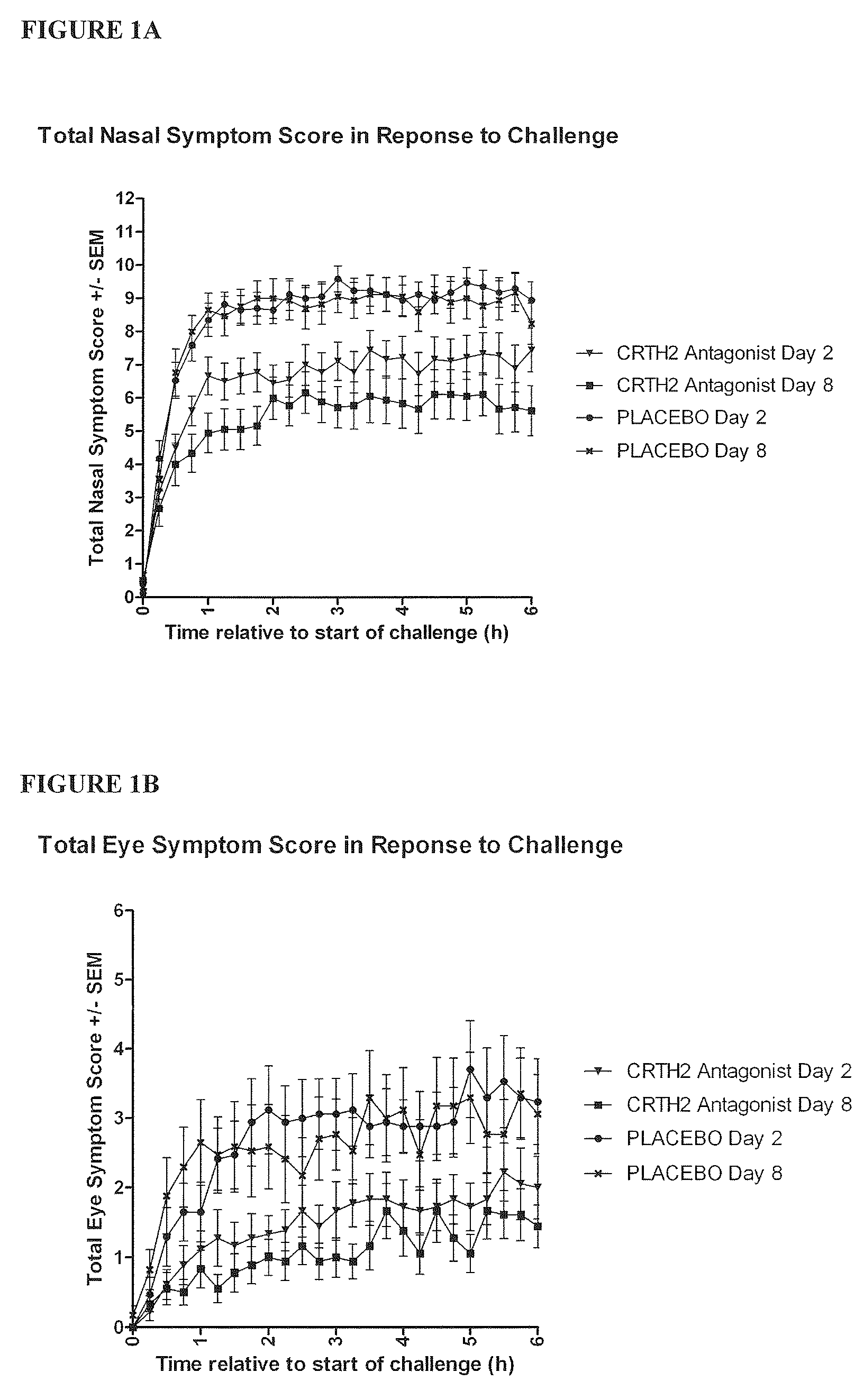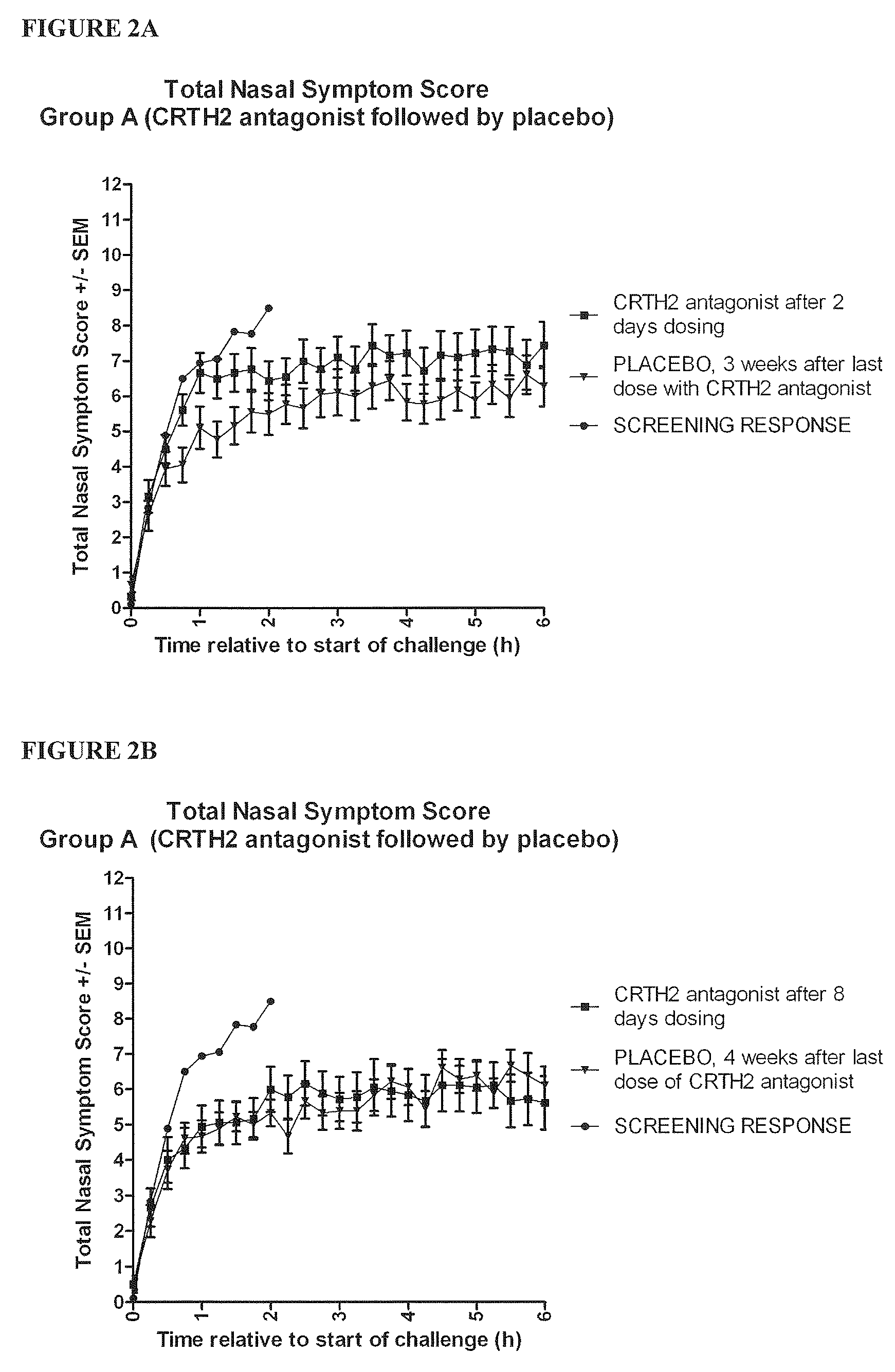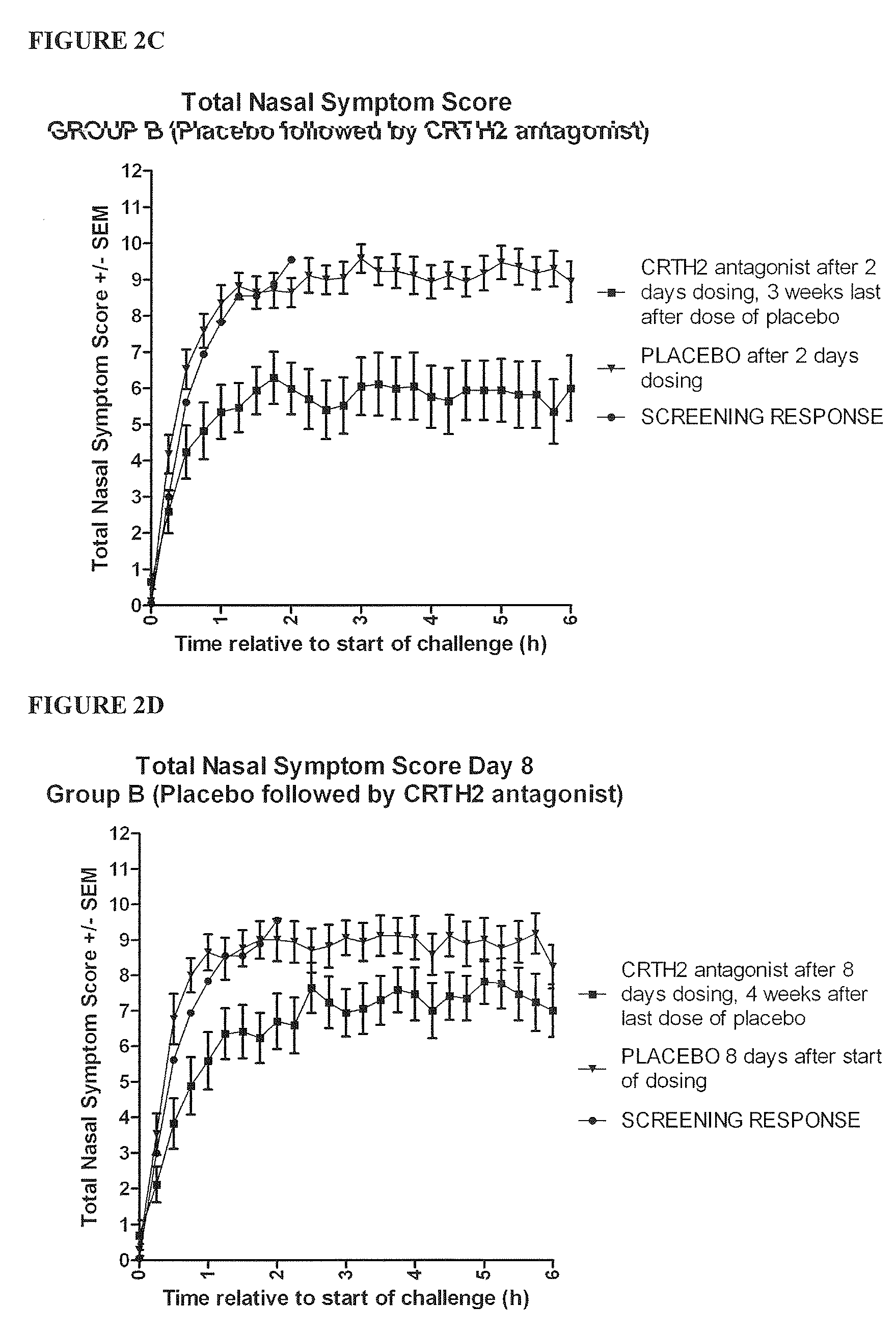Use of CRTH2 Antagonist Compounds
a technology of antagonist compounds and compounds, applied in the field of use of crth2 antagonist compounds, can solve the problems of unacceptable restrictions on the lifestyle of patients, limited approach, and treatment must be tailored to each individual patient, and achieve the effect of reducing the atopic state of patients
- Summary
- Abstract
- Description
- Claims
- Application Information
AI Technical Summary
Benefits of technology
Problems solved by technology
Method used
Image
Examples
example 1
Vienna Challenge Chamber Study
Study Design
[0456]The study was a randomised, double blind, placebo controlled, two way crossover evaluation of Compound 1, given orally for eight days. There was a screening period of one week and a washout period of three weeks between the two treatment periods. There was a follow up one week after the last dose of study drug. The group of patients who received the study drug for the first treatment period and placebo for the second was designated group A, while the group of patients who received placebo for the first treatment period and the study drug for the second treatment period was designated group B.
Treatment Plan and Methods
[0457]The subjects underwent a complete screening assessment to determine a baseline response to allergens. This screening assessment took place one week prior to the start of dosing.[0458]Subjects commenced dosing with Compound 1 or placebo on Day 1 (visit 2 or visit 5) of each treatment period of the study. Adverse event...
example 2
Measurement of Serum IgE
[0472]The effect of the CRTH2 antagonist Compound 1 compared to placebo was studied in mild to moderate asthmatics with an FEV1 of 60-80% of predicted and requiring only short acting inhaled β2-adrenergic agonists for symptomatic control.
[0473]Blood was collected for measurement of serum IgE at the beginning of the study and after 4 weeks of dosing with Compound 1 or placebo. Total serum IgE was quantified using fluorescent immunoassay using the Phadia CAP system.
[0474]Compound 1 treatment was associated with a significantly greater reduction in IgE than was observed with placebo. The median reduction in IgE at endpoint (−17.0 IU / mL compared with −3.0 IU / mL) was significantly greater with Compound 1 treatment (p=0.033, Wilcoxon test). This equates to a 41% reduction in serum IgE after treatment with Compound 1 for 4 weeks (see FIG. 3).
example 3
Apoptosis Challenge Test
[0475]Human Th2 cells were treated with 50 U / ml IL-2 or various concentrations of PGD2 in the absence of IL-2 for 16 hrs. The cells were stained with Annexin V-PE / PI and then analysed by FACSArray flow cytometer. The results are illustrated in FIG. 3, which shows that PGD2 has an anti-apoptotic effect on human Th2 cells.
[0476]Human Th2 cells were treated in the absence of IL-2 with a medium containing 100 nM PGD2 and various concentrations of CRTH2 antagonistic compounds (Compounds 1, 2, 3, 4 and 5) for 16 hrs. The cells were stained with Annexin V-PE / PI and then analysed by FACSArray flow cytometer. The IC50 of Compounds 1 to 5 to the rescuing function of PGD2 were calculated and found to be less than 100 nM in all cases.
[0477]The results of this experiment show that while PGD2 has an anti-aptotic effect on Th2 cells, the CRTH2 antagonists have a pro-apoptotic effect.
PUM
| Property | Measurement | Unit |
|---|---|---|
| Fraction | aaaaa | aaaaa |
| Fraction | aaaaa | aaaaa |
| Fraction | aaaaa | aaaaa |
Abstract
Description
Claims
Application Information
 Login to View More
Login to View More - R&D
- Intellectual Property
- Life Sciences
- Materials
- Tech Scout
- Unparalleled Data Quality
- Higher Quality Content
- 60% Fewer Hallucinations
Browse by: Latest US Patents, China's latest patents, Technical Efficacy Thesaurus, Application Domain, Technology Topic, Popular Technical Reports.
© 2025 PatSnap. All rights reserved.Legal|Privacy policy|Modern Slavery Act Transparency Statement|Sitemap|About US| Contact US: help@patsnap.com



